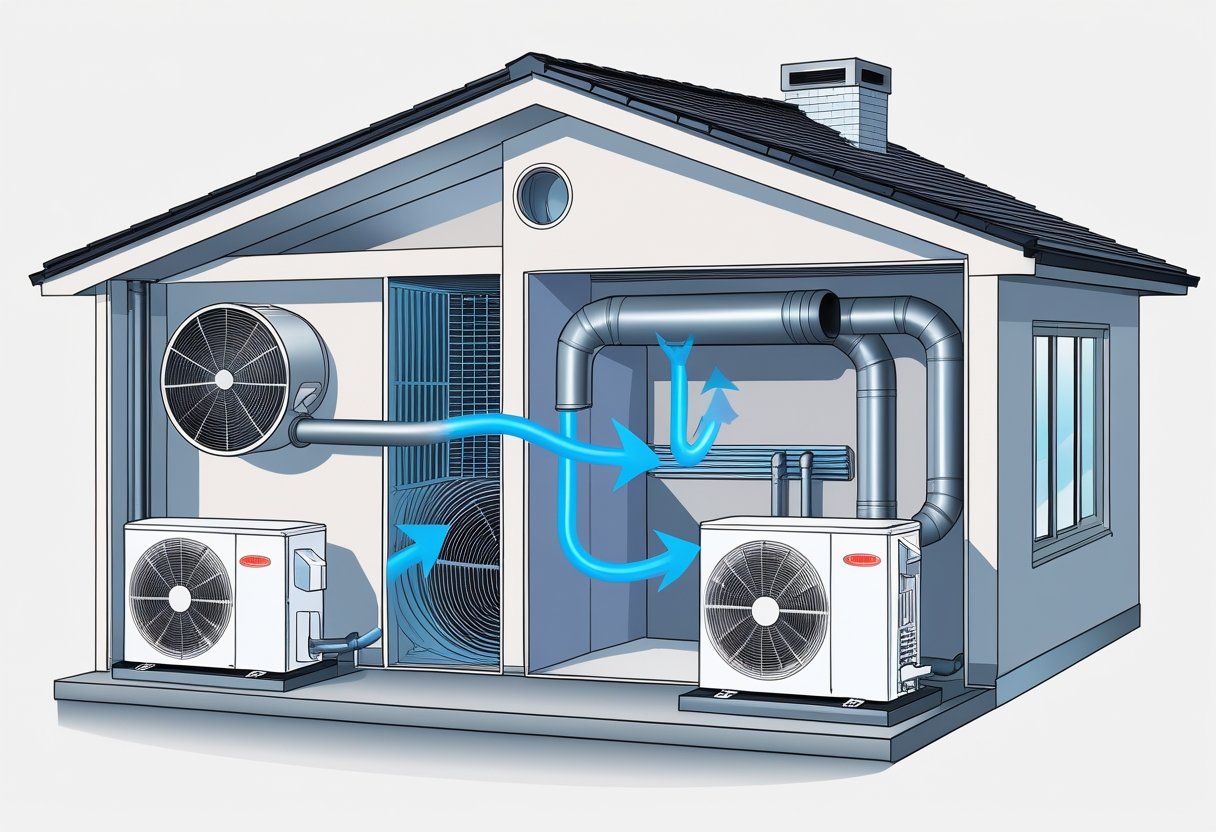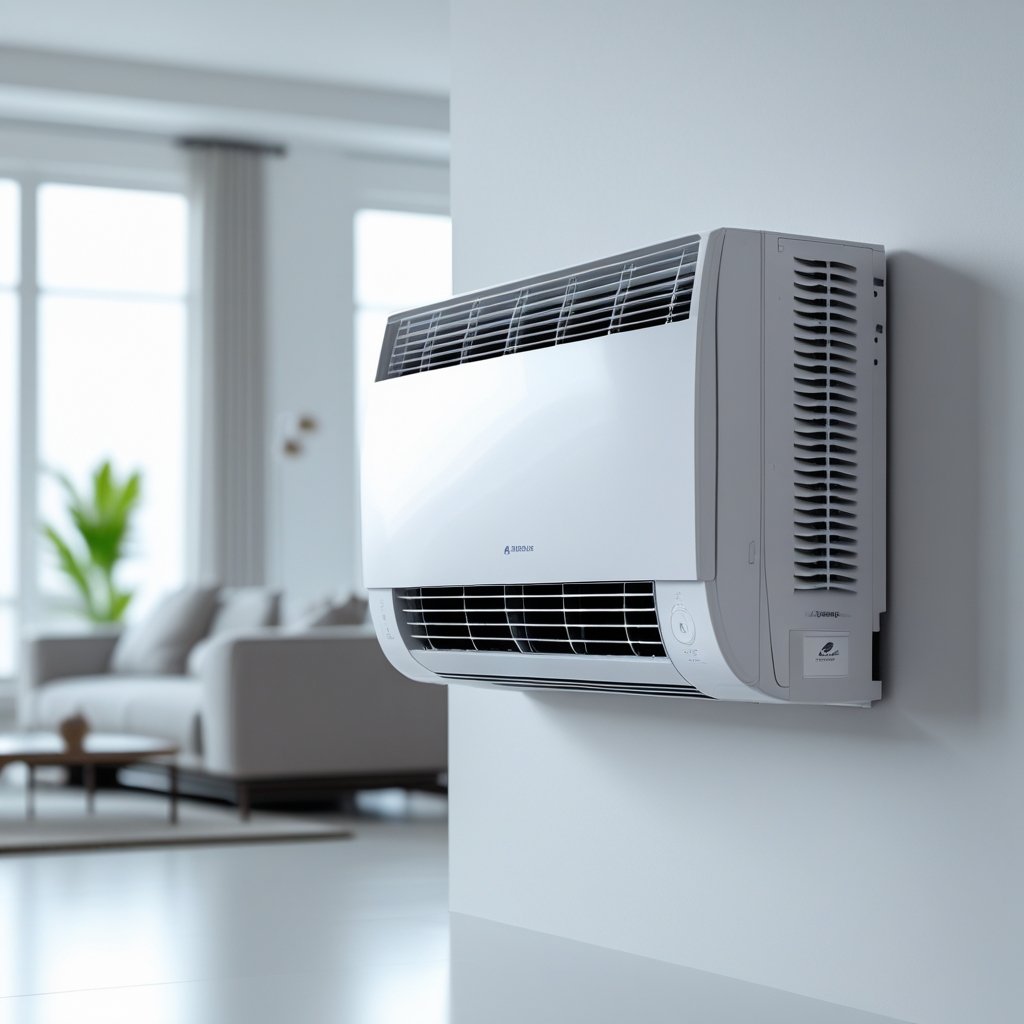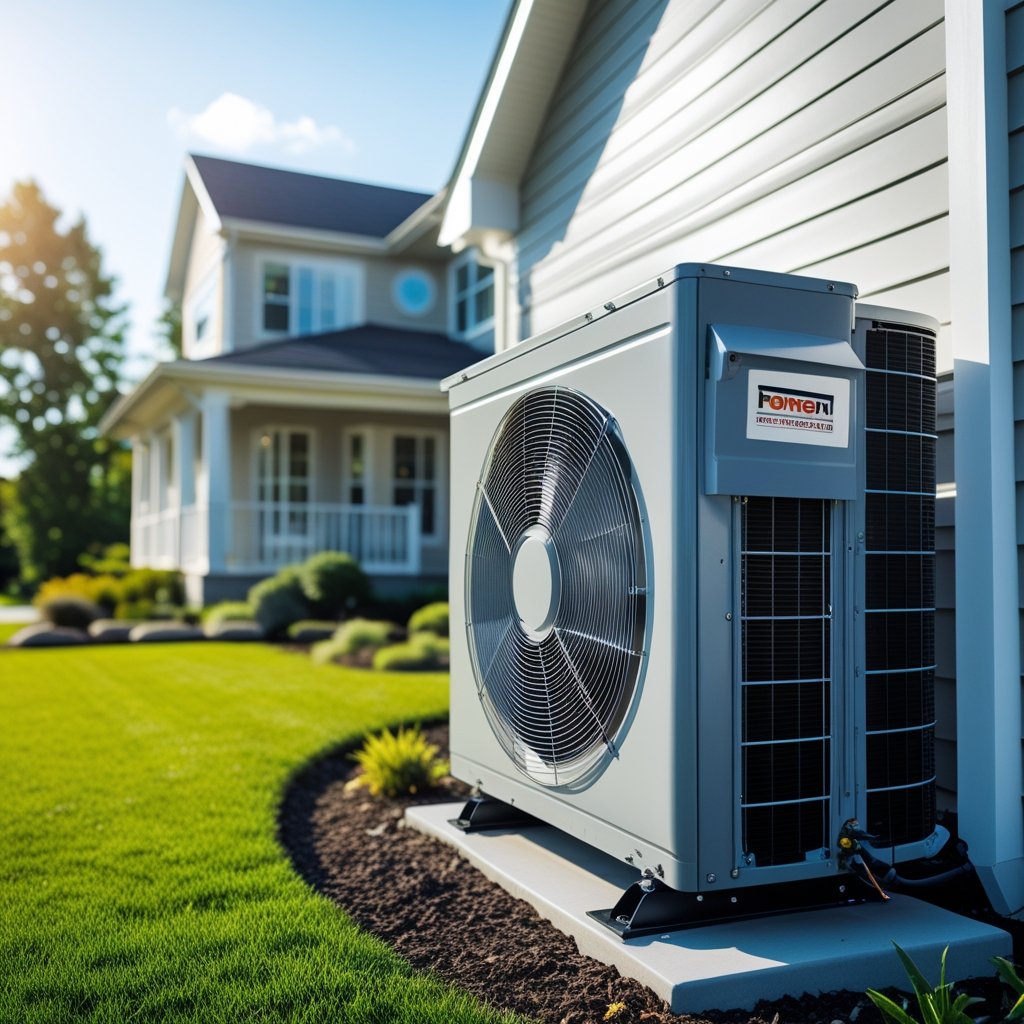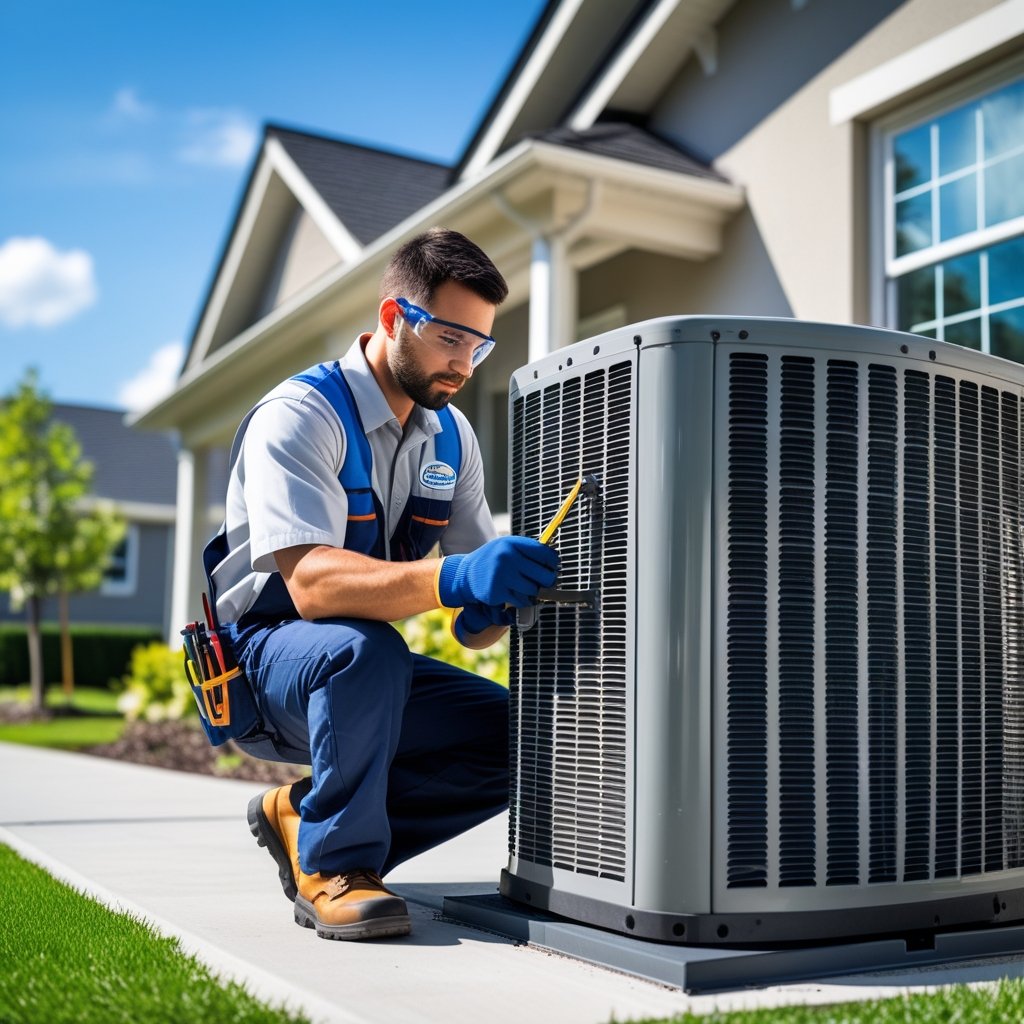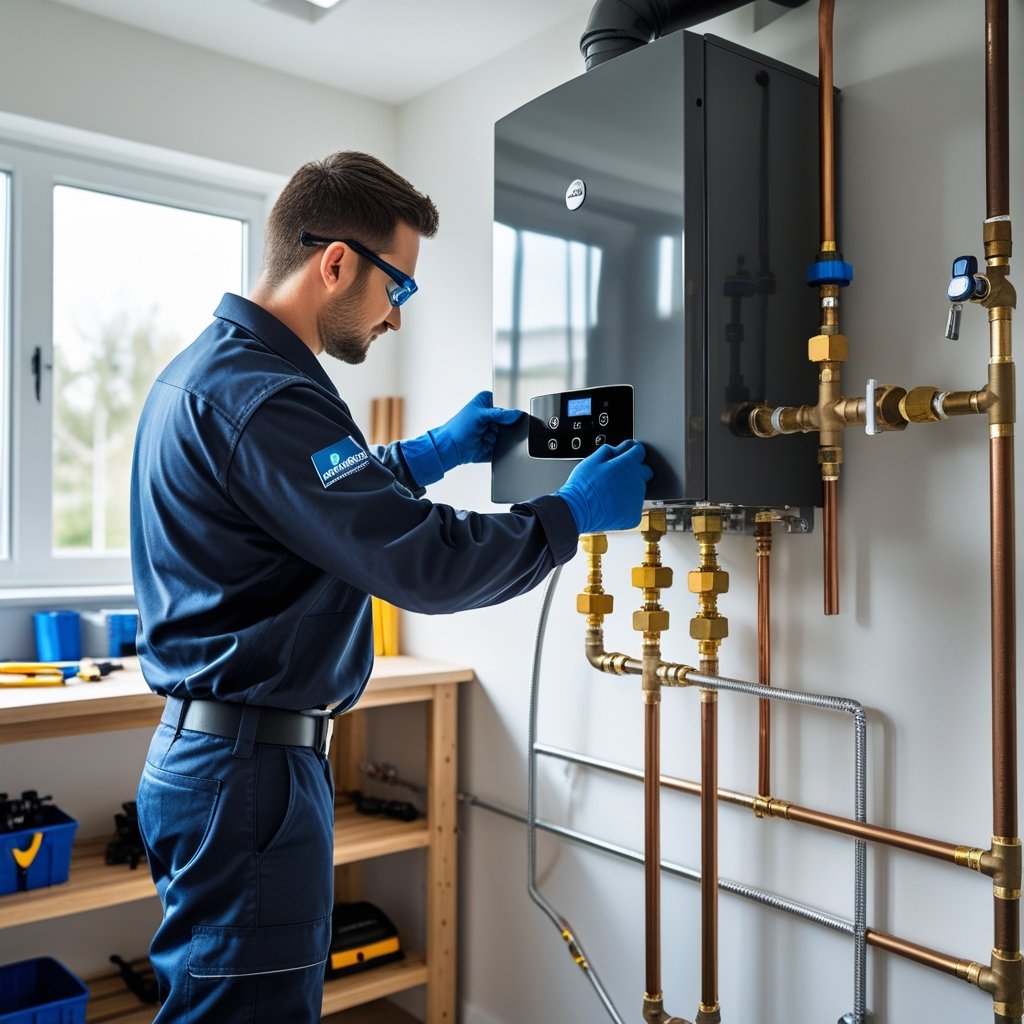Central air conditioning is a whole-home cooling solution designed to keep your living spaces comfortable during hot weather. These systems work by circulating cooled air throughout your home using a network of ducts, providing consistent temperatures in every room. This method differs significantly from window or portable units, which only cool single areas, making central air a more effective option for larger homes or spaces with multiple rooms.
Investing in a central AC system not only enhances comfort but also improves energy efficiency when properly maintained. Regular maintenance can prolong the life of your system, ensuring it operates at peak performance when you need it most. At Leo Kob Co., we emphasize the importance of working with professionals who can assist you in selecting and maintaining the right system for your home.
By understanding what central air conditioning entails, you can make informed decisions that contribute to your home's comfort and energy efficiency. Reach out to Leo Kob Co. for expert guidance tailored to your specific needs in South Central Pennsylvania.
What Is Central AC?
Central air conditioning systems are designed to provide whole-house cooling by effectively regulating the indoor climate. These systems work by cooling air in one location and distributing it through ducts to maintain comfort throughout your home.
Definition and Overview
Central AC refers to a type of air conditioning system that cools an entire building rather than individual rooms. Developed in the 1960s, these systems use a central unit to cool air, which is then pushed through a network of ducts and vents. Components of a central AC include a compressor, evaporator coils, and a system of ductwork that channels conditioned air to various spaces. Understanding these basics can help you appreciate how essential central air is to home comfort.
How Central Air Conditioning Differs from Other Cooling Systems
Central air conditioning stands apart from other types, such as window or portable units, primarily in its capacity and efficiency. While window units cool specific rooms, central AC maintains a consistent temperature throughout your home. Central systems use existing ducts, leveraging forced air mechanisms to deliver cool air, making them more efficient for larger spaces. Additionally, central AC often incorporates advanced filtration systems, improving indoor air quality and creating a healthier living environment.
Benefits of Central Air Conditioning
Investing in a central air conditioning system can enhance your home comfort significantly. Key benefits include:
- Efficiency: Central AC systems generally consume less energy compared to multiple window units, leading to lower utility bills.
- Improved Air Quality: These systems can help filter out allergens and pollutants, creating a cleaner indoor environment.
- Convenience: Central AC allows for easy temperature control throughout the home, eliminating the need to adjust multiple units.
For more details on installing or maintaining a central AC system, consider reaching out to a trusted provider like Leo Kob Co., who specializes in HVAC solutions in South Central Pennsylvania.
How Central AC Works
Understanding how central air conditioning operates is essential for ensuring optimal performance and efficiency. The system involves multiple key components working together to cool and distribute air throughout your home effectively.
Main Components of a Central Air Conditioner
A central AC system comprises several vital parts. The compressor is located in the outdoor unit and is responsible for circulating refrigerant through the system. This refrigerant absorbs heat from inside your home and releases it outside. The condenser coil, also part of the outdoor unit, helps in dissipating heat from the refrigerant.
Inside your home, the evaporator coil absorbs heat from indoor air. The blower fan moves air over this coil, cooling it before circulating it through the ductwork to various rooms. Connected by copper tubing, the indoor and outdoor components communicate efficiently to maintain your desired temperature.
The Cooling Process Explained
The cooling process begins with the thermostat detecting indoor temperatures. When it signals the system to cool, the compressor activates, pressurizing the refrigerant. It then travels to the condenser coil, where it releases heat and transforms into a liquid.
Next, the liquid refrigerant passes through the expansion valve, reducing its pressure and temperature. It then travels to the evaporator coil. Here, warm indoor air passes over the coil, causing the refrigerant to evaporate and absorb heat. This cooled air is then blown into your home, ensuring a comfortable environment.
Air Distribution and Circulation
Air distribution depends on a well-designed ductwork system. Properly installed ducts and vents ensure that cool air reaches every corner of your home. Return air ducts channel warmer air back to the AC system, allowing for continuous circulation.
The blower plays a crucial role in maintaining airflow. It pushes air through the ducts and into various rooms, ensuring even cooling. With well-maintained ducts, you can enhance efficiency and prevent unwanted air leaks, which helps in lowering energy costs.
Split Systems vs Packaged Systems
Central AC systems generally come in two varieties: split systems and packaged systems. A split system separates the indoor and outdoor units, which allows for better energy efficiency and quieter operation. It is ideal for homes where space allows for a flexible installation.
In contrast, packaged systems combine both units into a single unit for outdoor installation. This design saves indoor space and is often more cost-effective for smaller homes. Understanding which system suits your needs can help with effective climate control.
Leo Kob Co. ventures to ensure your HVAC systems work seamlessly. Maintaining your central AC through regular inspections can extend its lifespan and prevent costly repairs.
Types of Central Air Conditioning Systems
Central air conditioning systems are essential for regulating indoor temperatures effectively. Understanding the different types can help you choose the best option for your home. Here are the main types of central AC systems: split systems, packaged units, and ducted versus ductless systems.
Split Systems: Features and Uses
Split systems are the most common type of central air conditioning. They consist of two main units: an outdoor compressor and an indoor air handler. This design allows for efficient cooling throughout your home while maintaining a low noise level.
Many homeowners prefer split systems for their space-saving design and ease of installation, especially in homes with existing ductwork. Furthermore, split systems often include a heating component, making them versatile for year-round climate control. Leo Kob Co. can help you assess whether this system fits your needs for effective cooling and heating.
Packaged Central AC Units
Packaged central AC units combine all components into a single outdoor unit. This setup often sits on the roof or a concrete slab next to your home. The advantage of a packaged system is its compact design, making it ideal for homes with limited indoor space.
Packaged units are connected to the home's ductwork, allowing for efficient airflow. They can also provide heating and cooling in one unit. This can be a practical choice for homeowners looking for a simpler installation process. With proper maintenance, these systems can deliver reliable cooling performance.
Ducted vs Ductless Central Systems
When it comes to central air conditioning, you have options including ducted and ductless systems. Ducted systems utilize existing ductwork to distribute cooled air. This makes them a suitable choice for homes designed with central heating and air conditioning in mind.
On the other hand, ductless systems, like mini-splits, do not require ducts. They consist of one or more indoor units connected to an outdoor compressor. This type is excellent for homes without ductwork or where targeted cooling is desired. With both options offering distinct benefits, you should evaluate your home layout and cooling needs thoroughly.
Key Performance Factors and Energy Efficiency
When considering a central AC system, understanding its performance factors and energy efficiency is crucial for optimal comfort and reduced energy bills. Key components like SEER ratings, sizing, and features can greatly influence your system's cooling capacity and indoor air quality.
Understanding SEER Ratings
The Seasonal Energy Efficiency Ratio (SEER) rating measures the cooling output of an air conditioning system over a typical cooling season divided by the energy it consumes in watt-hours. A higher SEER rating indicates greater energy efficiency. For example, a system with a SEER rating of 16 is far more efficient than one rated at 13. This difference translates to significant savings on your energy bills. When selecting a unit, look for models that meet or exceed the minimum efficiency standards set by the Department of Energy, or consider those with the Energy Star certification for the best performance.
Energy-Efficient Features
Modern central AC units often come equipped with energy-efficient features that enhance performance. Look for options such as variable speed compressors, which use less energy by operating at different speeds based on demand. Programmable thermostats also allow for better temperature control, minimizing energy waste when you're not home. Additionally, features like enhanced filtration systems can improve indoor air quality while reducing the load on your system. Investing in these energy-efficient traits can lead to long-term savings and enhanced comfort.
Sizing and Cooling Capacity (BTUs)
Choosing the right size for your central AC is critical. The cooling capacity is measured in British Thermal Units (BTUs). A system too small may struggle to cool your home, while one that is too large could cycle on and off frequently, leading to increased wear and higher energy costs. A professional sizing calculation can help you find the optimal BTU rating for your space. You can trust Leo Kob Co. to guide you through the sizing process and ensure your unit meets your home's specific cooling needs.
Impact on Indoor Air Quality
The performance of your central AC system directly affects indoor air quality. Regular maintenance, including changing or cleaning filters, ensures your system operates efficiently and reduces allergens, dust, and pollutants in your home. High-quality air filters can trap more particles, granting you cleaner air. Moreover, systems that incorporate proper ventilation can prevent humidity build-up, further enhancing air quality. Ensuring that your AC is not only efficient but also maintains a healthy indoor environment is essential for your well-being.
Installation, Maintenance, and Longevity
Proper installation and routine maintenance are vital for the longevity and efficiency of your central AC system. By understanding these processes, you can ensure comfort in your home and avoid costly repairs.
Central AC Installation Process
The installation of a central AC system begins with an assessment of your home's size and layout. This evaluation ensures that the unit is appropriately sized. An oversized or undersized system can lead to inefficiency and discomfort.
Next, selecting the right HVAC equipment is crucial. Ensure that you choose high-efficiency models, which often come with warranties for peace of mind. Professional installation is recommended to avoid common pitfalls, such as improper ductwork connections or refrigerant charging. This enhances performance and maximizes lifespan.
After installation, you can expect to enjoy a balanced and consistent cooling effect throughout your living spaces. Choose a reputable contractor, like Leo Kob Co., to ensure quality service at a fair price.
Routine Maintenance for Optimal Performance
Regular maintenance is essential for keeping your central AC system running efficiently. Schedule annual inspections to clean and check components. This includes changing or cleaning air filters, inspecting fan blades, and checking refrigerant levels.
You should also clean the coils and drain lines to prevent potential clogs. Creating a maintenance log can help track service visits and repairs. Proper maintenance extends your system's lifespan, potentially up to 20 years, depending on usage and care.
Being proactive can help identify minor issues before they escalate into significant repairs, saving you both time and money in the long run.
Common Issues and Troubleshooting
Awareness of common issues can help you troubleshoot problems before calling for professional help. Here are some frequent signs that indicate your AC might need attention:
- Poor airflow: This could signal a dirty filter or blocked ducts.
- Unusual noises: Grinding or rattling sounds may indicate a mechanical issue.
- Increased energy bills: If you notice a spike, your system might not be operating efficiently.
If you encounter these issues, it's wise to consult with a trusted technician from Leo Kob Co. for professional guidance. Timely repairs help maintain optimal efficiency and extend the life of your HVAC system.
Choosing a Central AC System
Selecting a central air conditioning system involves understanding the top brands, factors specific to your home, and evaluating costs alongside warranty options. Each aspect plays a crucial role in ensuring you make an informed decision that aligns with your cooling needs.
Top Brands and Manufacturers
When exploring central AC systems, consider brands known for reliability and performance. Carrier and Trane are leaders, recognized for their advanced technology and energy efficiency. Lennox offers a range of models designed to fit various budgets while maintaining quality. Goodman and Amana are often more budget-friendly options, still delivering solid performance without compromising on essential features. Each brand has its strengths, so it's worthwhile to compare model specifications, customer reviews, and energy ratings to ensure you choose a system that meets your expectations. As a family-owned company, Leo Kob Co. can guide you through selecting the right brand based on your needs.
Factors to Consider for Your Home
Your home’s specific requirements significantly influence the type of AC system you should choose. Consider factors such as the size of your home, current insulation, and the number of windows, as these will impact cooling requirements. The capacity of air conditioners is measured in BTUs; ensure your selected unit can adequately cool your living space without being oversized, which can lead to inefficiency. Additionally, look at energy efficiency ratings (SEER ratings), which can indicate potential savings on your electricity bill. Installation complexity and the layout of your ductwork can also affect your decision; consult with a professional like Leo Kob Co. for an assessment tailored to your situation.
Cost and Warranty Considerations
Cost is an essential factor in choosing a central AC system. Prices vary widely based on brand, efficiency rating, and installation requirements. On average, you may spend anywhere from $3,000 to $7,000, including installation. It's advisable to factor in the long-term operational costs associated with energy usage. Review warranty terms too; top manufacturers typically offer comprehensive warranties, covering major components for up to ten years. Investing in a unit with a solid warranty can save you from unexpected repair costs. Evaluate your budget and financing options to make a decision aligned with your financial plan and peace of mind.
Frequently Asked Questions
This section addresses common inquiries about central air conditioning systems. Understanding how these systems operate, their types, and installation considerations will help you make informed decisions for your home or apartment.
How does a central air conditioning system work?
A central air conditioning system operates by using a compressor and condenser located outside your home and an indoor unit that includes an evaporator coil. The system cools air in the indoor unit, which is then distributed through ductwork to various rooms. A thermostat controls the temperature, ensuring comfort throughout your space.
What are the different types of central air conditioning systems?
There are primarily two types: split systems and packaged systems. Split systems have separate indoor and outdoor units, while packaged systems combine all components into one outdoor unit. Each type has specific installation and space requirements, which may affect your choice based on your home's layout.
How does central AC differ from split AC?
Central AC systems are designed to cool an entire home using ductwork, while split AC units typically cool individual rooms without the need for ducts. Split units can be more flexible in installation, especially in homes without existing ductwork.
What are the considerations for installing central AC in an apartment?
When installing central AC in an apartment, check if you have the necessary ductwork, as many apartments use window or portable units. Consider space limitations and the building’s regulations on HVAC installations. You may want to consult with a professional, such as Leo Kob Co., to assess feasibility and compliance.
How can one determine if their home is equipped with central AC?
To determine if your home has central AC, look for an outdoor compressor and an indoor air handling unit. Check for ductwork that distributes air throughout your home. Additionally, a thermostat typically located on a wall will indicate a central system.
What are the typical price ranges for central air conditioning units?
Prices for central AC systems can vary based on capacity, efficiency, and brand. On average, you may expect to pay between $3,000 and $7,000, depending on installation complexity. It’s important to obtain quotes from trusted installers like Leo Kob Co. to understand the specifics for your home.

